It’s a contentious subject, but flash can transform your wildlife photography, provided you’re careful and considerate. Expert Tom Mason explains how to use it correctly and safely
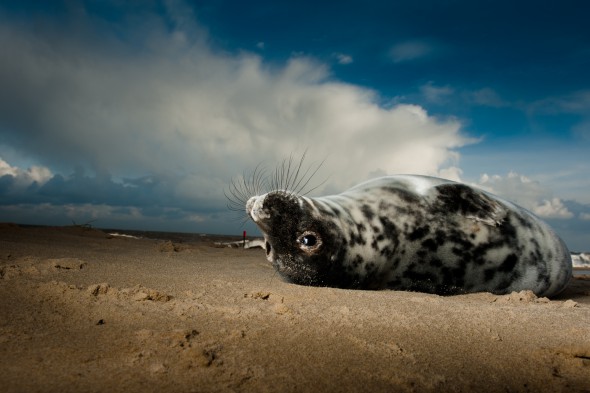
In strong lighting, balancing flash and ambient lighting together can be a powerful tool for creating images
Flash can be a powerful tool in photography, allowing a photographer to illuminate, emphasise or bring a whole new dimension to an image. In commercial, lifestyle, portrait, fashion, wedding and sports shooting, using flash is widely accepted and welcomed, helping to create images that go far beyond the possibilities of natural light.
For wildlife photography however, the use of flash is a very contentious issue. Some photographers welcome the use of this powerful asset to create new and interesting images, whilst others cast it aside, with very negative attitudes towards the use of artificial light. For me, when I first picked up a camera back at the age of eleven I was very much in the no-flash camp. Why? Because at the time I didn’t understand its use, potential and power. Now, however, I am a changed photographer indeed.
Ethics
In wildlife photography the single most important rule is always to maintain the highest levels of ethical practice in order to reduce the impact on a species or creature. In order to look at the impact of flash on subjects, it’s firstly very important to understand how both flashguns and the eye work.
Flashguns work simply by producing a sudden pulse of light, for a very short duration, directed towards a subject. They can be zoomed in or out to change the relative light direction or fall-off, and the power settings can be altered to change the strength of the light produced.
The eye (be it human or animal) works by focusing available light onto the retina (the rear section of the eye), causing it to hit the light-detecting rods and cones. These detect the amount of light entering the eye and relay corresponding signals to the optic nerve in order for the brain to develop a visual image of the world. Cone cells are for daylight and colour, while rods cells are for night. Animals that are active in the day have a greater cone to rod ratio, while the opposite is true for nocturnal creatures.
In bright light, rod cells become bleached of rhodopsin, a pigment that is important for the transmission of the electrical signals that are ultimately recognised as images. Hence why, in daylight conditions, cone cells are primarily used. The transition from cones to rods happens as light fades, giving the rod cells a chance to charge for work in dark conditions.
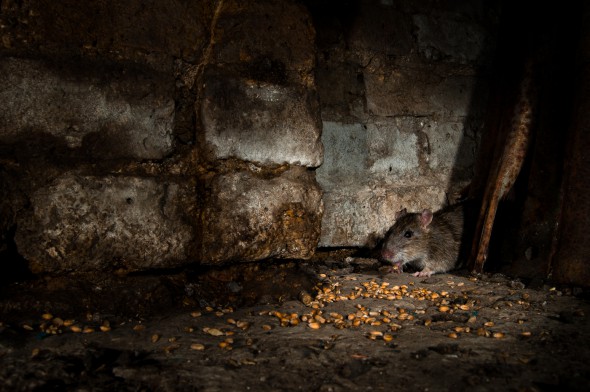
Using flash can be a great way of adding emphasis to an image, concentrating the viewers attention on the subject and reducing distractions
For primarily nocturnal creatures a sudden burst of light during dark conditions can cause a momentary loss in vision. However, due to the intensity and strength of the light from a flash unit, it will produce no lasting damage. Flashguns wouldn’t be legal for the use in photographing people if their repetitive use caused retina damage. Of course, keeping the flash power to a minimum and moving the flash farther away from your subjects will further decrease the impact.
In bright conditions, flash that is used for a fill light where there is already a high amount of ambient light will generally have little effect on a subject. With their eyes already adjusted to the bright lighting conditions and working using the cone cells in the eye, most species will ignore or possibly not even notice a short flash duration.
Of course, it is also important to consider the number of images taken and the circumstances involved. In most cases, no matter what the subject, you will want to minimise the number of frames you are taking in order to reduce disturbance. At night, when animals are far more sensitive to light, this may involve only shooting one or two frames, allowing them to recover their vision and quickly return to their natural behaviour. Guidelines are useful, but of course if you feel something is impacting a subject negatively, use your common sense and stop.
In addition to your subject you must also consider those around you in the environment. If you are working in a public location or an area with a high number of photographers, employing flash techniques may encourage others to follow suit, resulting in more stress for individual animals. You may also disturb a species that a large number of people are photographing, which will likely make you rather unpopular!
As with all wildlife photography, the subject always comes first. Using flash with wildlife does take more consideration than simply shooting with available light, but as long as you work with low flash power and minimal frames, and understand when and how flash will likely affect your subject, it can certainly be utilised in a non-damaging and appropriate fashion.
Why Use Flash?
Using flash isn’t just for those situations when the natural light isn’t good enough. It opens up a whole new area of opportunity for the wildlife photographer, giving us an effective tool to make new and different images of the natural world. Here are a few ways in which flash can be a great addition to the wildlife photographer’s skill set.
Fill in
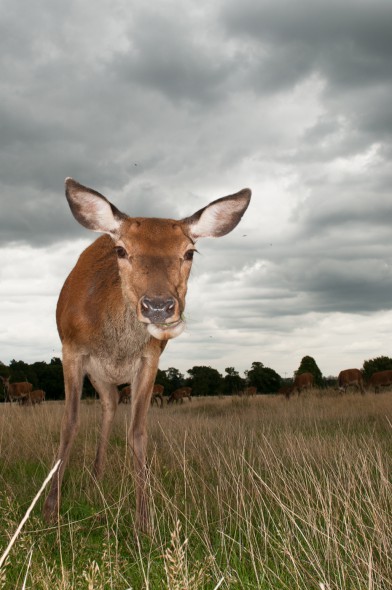
Even a pop up flash can be of great use for a small burst of fill light, here I was only feet from the red deer yet the small burst of flash didn’t startle it at all
In strong, harsh light or when subjects are backlit, shadows can be a real problem for the wildlife photographer, creating far from perfect conditions for creating images. The use of flash for a small amount of fill light can be an excellent way of bringing back detail in shadows and balancing the light in an image. In addition, using fill flash can extend your shooting further into the day after the best light of dawn or dusk, giving greater opportunities to create images.
Freezing action
Some subjects in the natural world are just too fast for standard photographic practices. Flash photography, especially high-speed sync, can open up a whole new world of possibilities, allowing photographers to capture high-speed action in a whole new way. Through the use of very short flash durations, birds or insects in flight can be captured in great detail, revealing the true wonders of wildlife.
Creative images
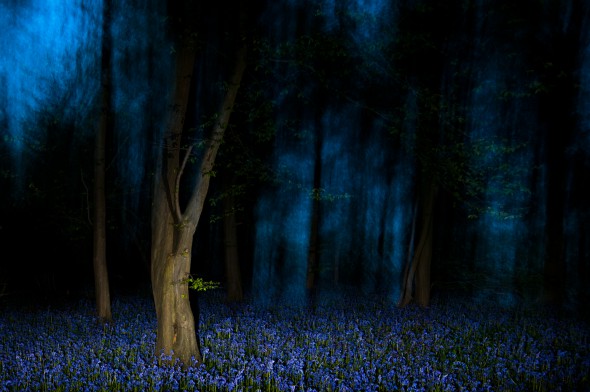
Pairing flash exposures and slow shutter speeds can be a great way of producing creative images that are a little different from the norm
Creativity is king in the photography world, and with constant developments in technology, photographers can now experiment, explore and create images that were once simply impossible. The use of flash in nature photography can open up a wealth of creative opportunities – light can be modified, directed and focused to emphasise and highlight, giving photographers the freedom to direct the viewer’s attention towards or away from elements in a frame.
In turn, this gives us a whole new level of creative control when making our images, a chance not only to share the wonders of the natural world but also to put our own artistic spin on what we see.
Light in the dark
With flash, it is never too late to make an image. Using artificial light, images can be produced at any time of day or night, providing opportunities to work with subjects that may only be active during the twilight hours. Combining these techniques with modern cameras that have high-ISO capabilities means very low flash powers can be used, giving the desired results while also having a lesser effect on the subjects in question.
Mighty Macro
When focusing on the minute, flash can be a breath of fresh air. By providing additional illumination on small subjects it gives photographers the chance to use smaller apertures for greater depth of field, as well as granting new opportunities to develop better lighting for more pleasing compositions.
Conclusion
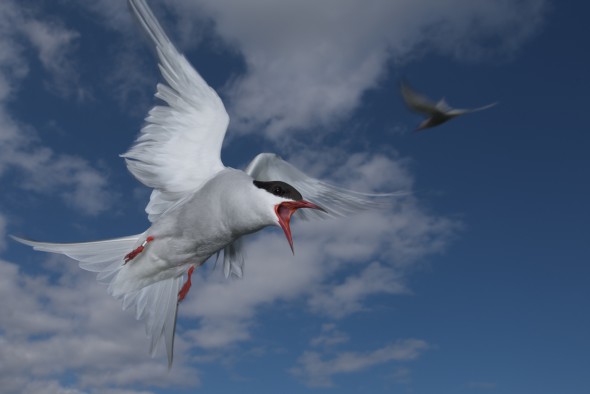
When shooting against a bright sky using a small amount of flash can add real punch to an image, if working in close proximity be sure to try and difuse the flash
The use of flash in wildlife photography is still something that will promote and cause debate among the community. With some photographers swearing by it, and others at it…
In my own work I shall continue to incorporate the techniques of flash into my images. In their creation, however, I shall be doing my utmost to make sure they have a minimal impact on my subjects.
Flash photography of course isn’t always necessary for creating great images, and shooting in great natural light will always allow photographers to create dramatic, engaging and beautiful works.
Working with artificial light can bring a whole new dimension to your image production, but when using it out in the field, it is paramount that the utmost is done to minimise its impact on your subjects.
What are your thoughts on the use of flash in wildlife photography? Have you experimented with it, or is it something you always want to avoid?
About the Author
Tom Mason is a wildlife photographer and journalist, and is also the host of our Life in the Wild series. Keep up with him on Twitter,@TomMasonPhoto, or visit his website for more.

